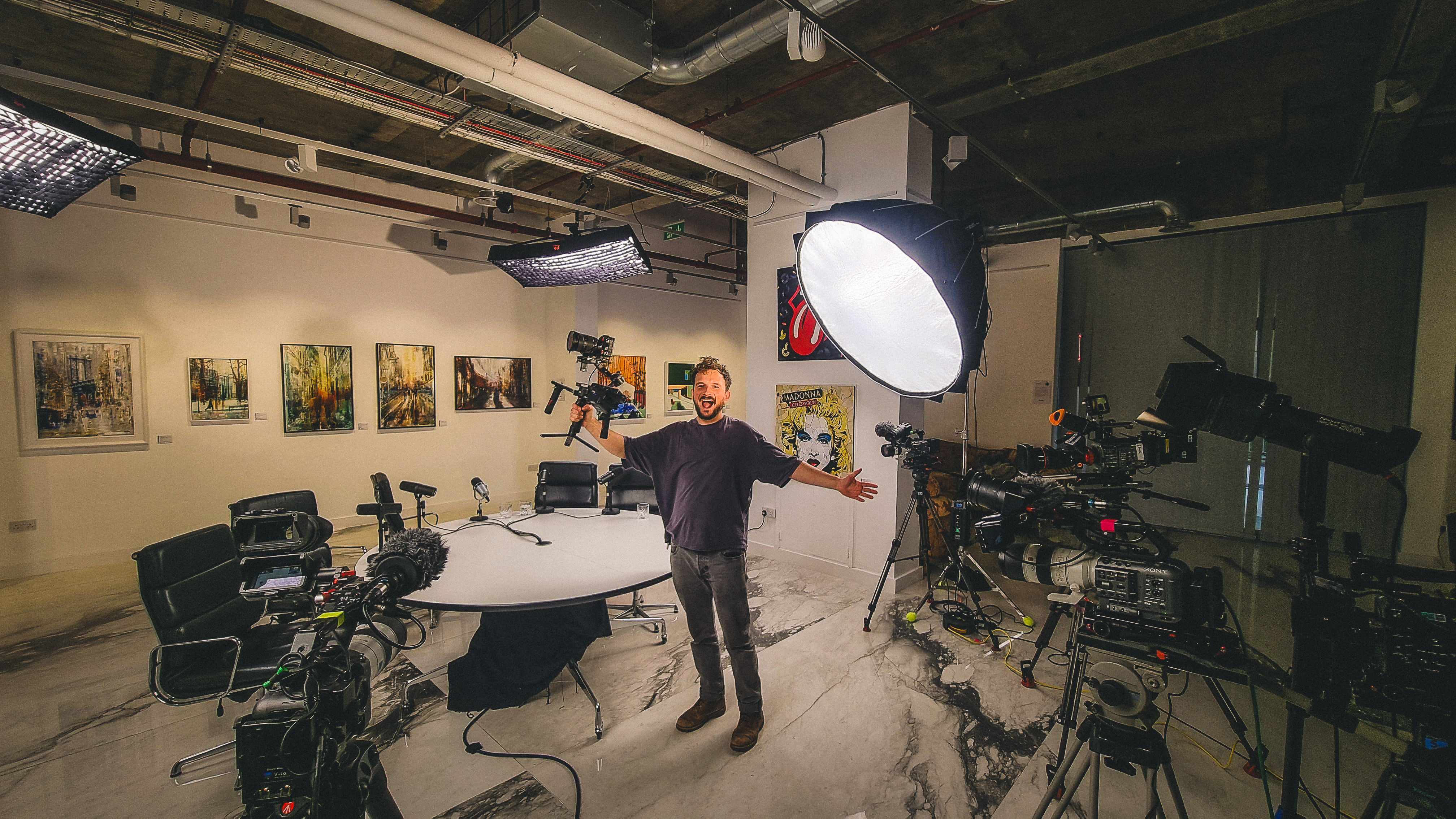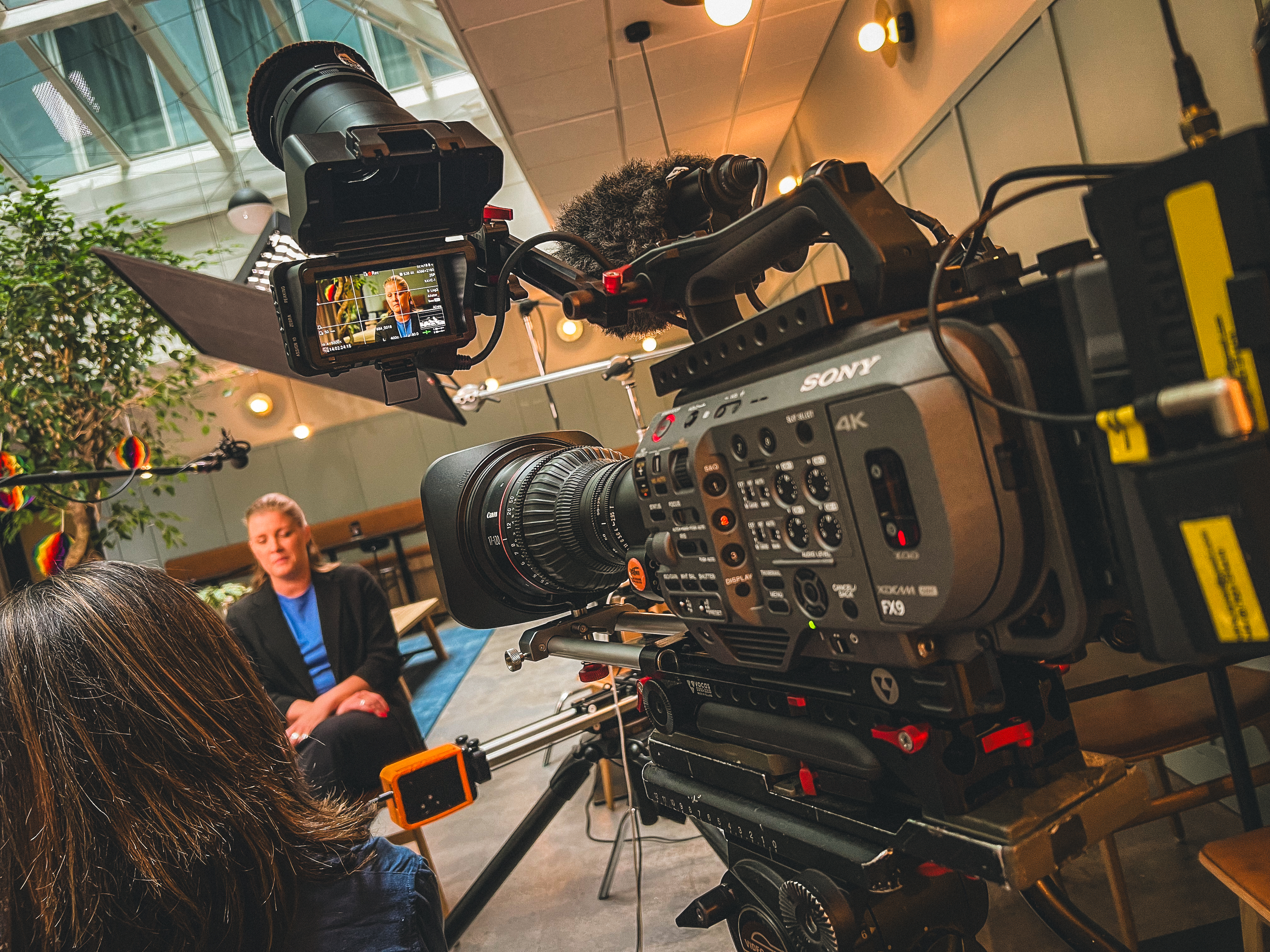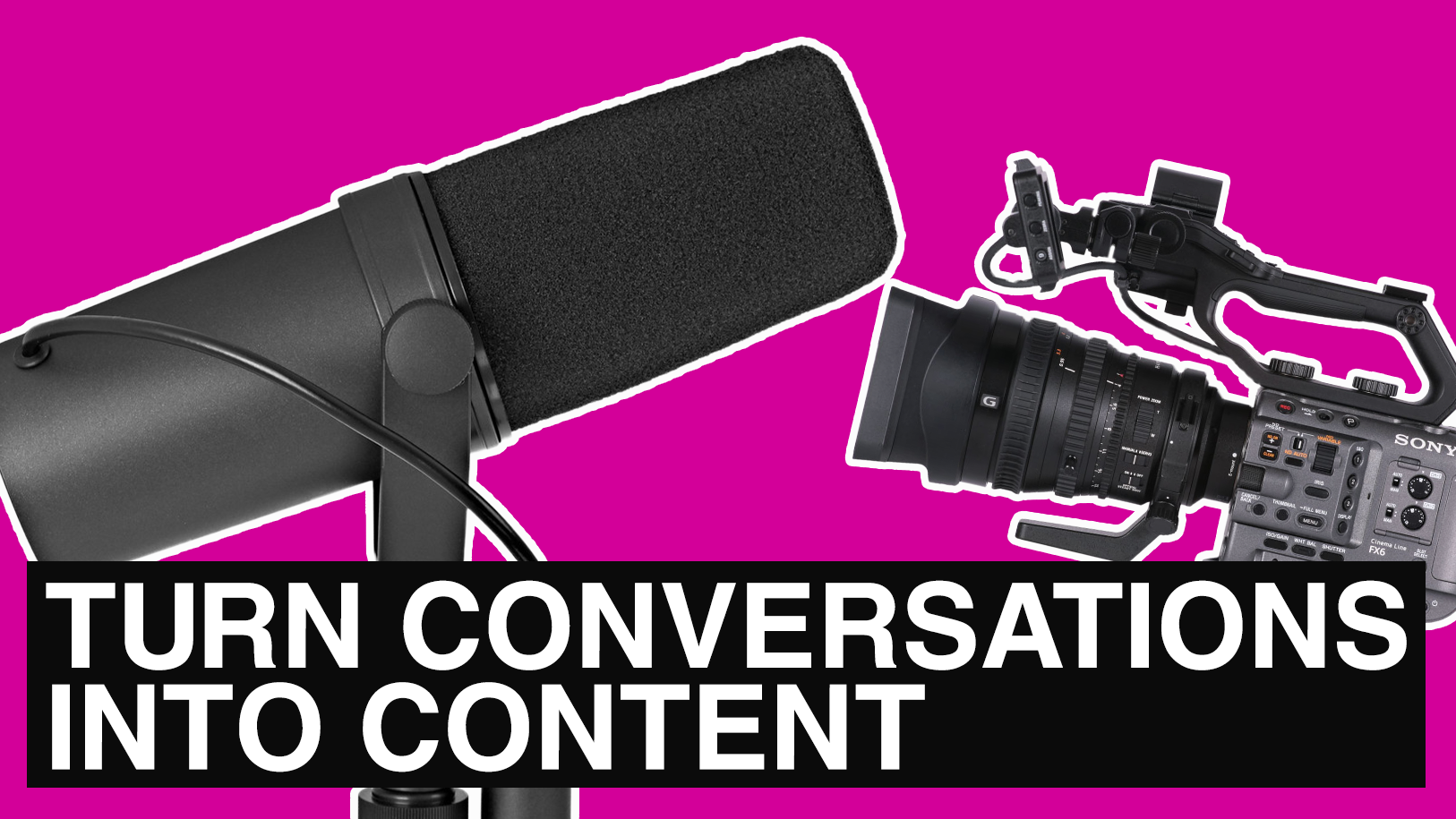Video podcasting is everywhere right now — and for good reason. It’s the most engaging, flexible, and shareable form of content you can create in 2025. Whether you’re an agency, business leader, creative, or startup founder, filming genuine conversations in your own space gives audiences something they can connect with. It’s authentic, versatile, and — when done well — one of the most powerful ways to build visibility, trust, and interest.
In this article:
- Why Video Podcasting Beats Audio Alone
- 2025 Video Podcasting Trends You Should Know
- What Makes a Great Video Podcast
- How Video Podcasting Supports Corporate Video & Branded Content
- Video Podcasting as a Strategic PR Move
- Why Work with a Professional (and Why Your Office Beats a Studio)
- Quick Tips for a Successful Video Podcast
- Final Thoughts
Why Video Podcasting Beats Audio Alone
1) Visuals build deeper connection
Audio is brilliant for convenience, but seeing faces, reactions, and chemistry adds a human layer that audiences lean into. Visual storytelling simply lands harder.
2) A content goldmine from one recording
- Full-length episode for YouTube and your site
- Audio-only version for Spotify/Apple
- Dozens of short clips for Instagram Reels, TikTok, and LinkedIn
- Quote graphics, stills, and behind-the-scenes posts
Short, authentic moments perform especially well on Instagram and TikTok. A single session can fuel weeks of scroll-stopping content.
3) SEO & discoverability
YouTube acts like a search engine, and Google prioritises rich media. Embedding a video podcast on your site increases dwell time and helps the whole domain perform better organically.
2025 Video Podcasting Trends You Should Know
- YouTube is the top discovery platform. More people find shows via video than via audio-only apps.
- Short-form rules. 30–60s clips on Reels and TikTok are the biggest driver of growth and new followers.
- Authenticity wins. Real conversations beat over-scripted promos every time.
- Hybrid formats are normal. Mix in-person and remote guests without compromising quality.
- Production values are rising. Clean sound, flattering lighting, and multi-camera edits are now expected.
Why Instagram & TikTok matter: both platforms reward consistent posting of authentic, valuable clips. Lead with a clear hook, add captions for silent viewing, and plan 6–10 punchy takeaways per episode for social.

Jon Collins onset filming a video podcast...
What Makes a Great Video Podcast
Content & Format
- Clear purpose: educate, entertain, or lead the conversation in your space.
- Audience-first: shape topics around real questions and pain points.
- Plan, don’t script: outline beats; keep delivery natural.
- Flexible setups: one-to-one, or a lively panel of up to five. Keep the pace moving.
- Built-in repurposing: mark timecodes for social clips as you record.
Production Quality
- Multi-camera angles: wide set shot + singles keeps viewers engaged.
- Professional lighting: flattering key/fill/back for a consistent look.
- Broadcast-quality sound: pro mics, clean gain staging, and isolated tracks.
- Authentic setting: recording in your own space feels real and subtly showcases environment and culture.
- On-brand graphics: tasteful titles, lower-thirds, and intro/outro.
Delivery & Growth
- Polished edit: tighten pacing; remove filler; add chapter markers.
- Accessibility: captions and transcripts help SEO and audience reach.
- Publishing mix: website + YouTube + audio platforms + social cutdowns.
- Consistency: fortnightly or monthly beats sporadic uploads.
- Measure what matters: retention, clip performance, traffic, and enquiries.
How Video Podcasting Supports Corporate Video & Branded Content
It’s a relaxed, relatable format that still looks professional. Perfect for thought-leadership, expert Q&As, client interviews, internal comms, and product storytelling. Regular episodes boost SEO, create a steady stream of social video, and position you as a trusted voice in your field.
Here's an example of a video podcast for Hiscox, that I helped film.
Video Podcasting as a Strategic PR Move
- Authority: hosting conversations naturally places you at the centre of your industry.
- Visibility: every episode is PR-ready material for social, newsletters, and media outreach.
- Relationships: inviting guests opens doors to partnerships and earned coverage.
- Human stories: faces, tone, and unscripted moments build trust faster than a press release.
- Message control: set the narrative, tone, and visual standard on your own terms.

Why Work with a Professional (and Why Your Office Beats a Studio)
Anyone can hit record — but making something people actually watch takes craft. Professional multi-camera setups, lighting, and sound elevate quality fast. Filming in your office or workspace keeps things comfortable and authentic while avoiding studio costs and logistics.
- Multi-angle shooting: wide + close-ups for pacey edits and stronger storytelling.
- Light & sound: flattering lighting and broadcast-grade microphones are non-negotiable.
- In-space filming: your environment adds character and keeps guests relaxed.
Explore Video Podcast Filming →
Quick Tips for a Successful Video Podcast
- Keep it natural: outline topics; avoid reading scripts.
- Choose the right room: clean background, controlled light, minimal echo.
- Mic every voice: individual mics and isolated audio tracks.
- Plan clips: aim for 6–10 short takeaways per episode.
- Caption everything: most social viewing is silent.
- Post consistently: set a cadence you can maintain.
- Cross-post smartly: YouTube + site embed + Spotify/Apple + Reels/TikTok/LinkedIn.
- Review metrics: retention curves and clip performance guide the next episode.
Final Thoughts
Video podcasting isn’t a fad — it’s a high-impact way to share real conversations, build trust, and create a steady stream of usable content. Shot well, in your own space, it becomes a repeatable engine for visibility and interest.
Ready to roll cameras? Start your video podcast here.

